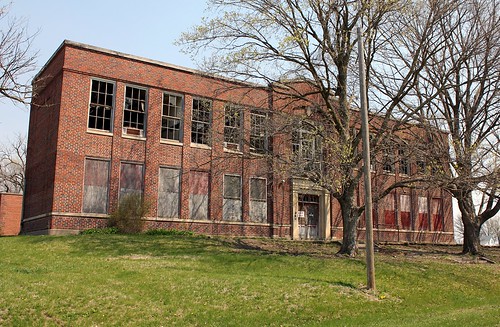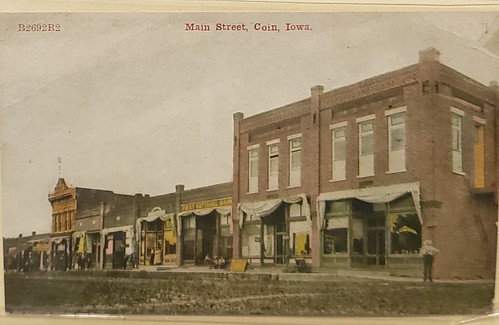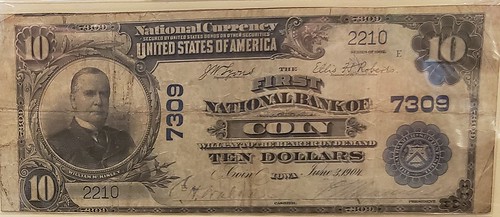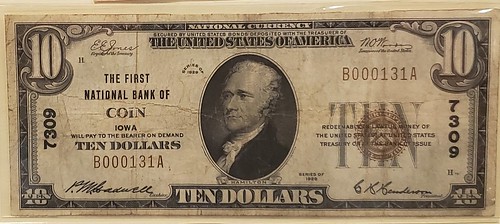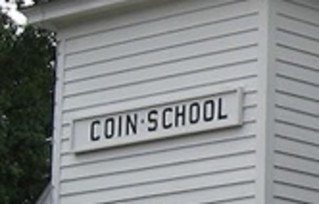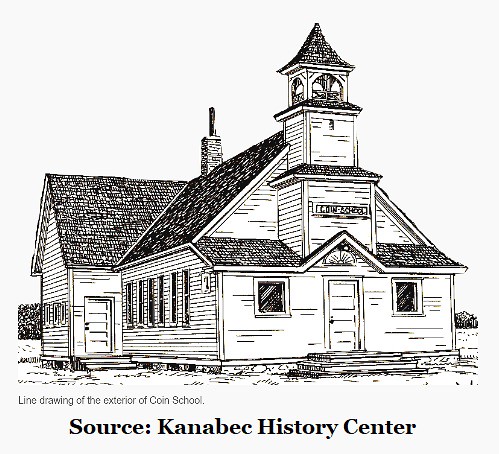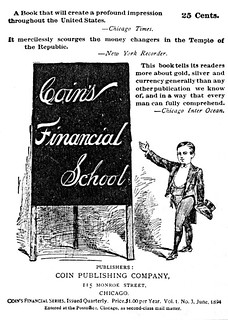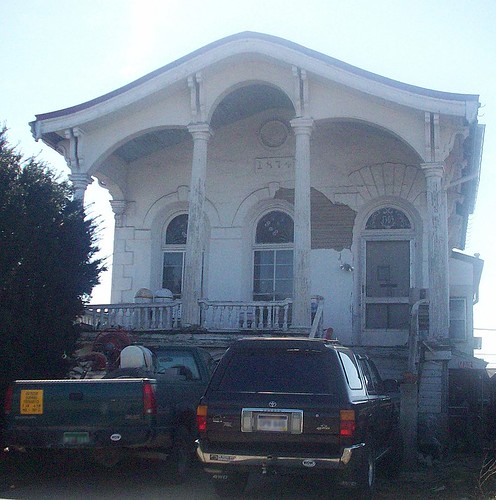
PREV ARTICLE
NEXT ARTICLE
FULL ISSUE
PREV FULL ISSUE
ANSWER: THE COIN SCHOOLLast week E-Sylum Feature Writer and American Numismatic Biographies author Pete Smith asked readers about The Coin School. Julia Casey, Barbara Bailey, Rob Luton, B.J. Herbison all correctly identified it and provided links to information online. Steve Rye and George Cuhaj had good hunches. -Editor The Coin School, Iowa Steve Rye of Mesa, Az. (formerly from one of Iowa's small towns—there are 900 of them) writes: "I have no direct knowledge, but my hunch is that the school was located in the town of Coin, Iowa. "Today's Coin has a population of less than 200 and is located in the southwest corner of the Hawkeye state." Julia Casey writes: "Pete - are you an alumnus of this institution?" Higgins Museum Curator George Cuhaj writes: "The school photo I uncovered in Coin, Page County, Iowa is a two-story brick building, now with a first floor boarded up and nearly all of the second floor windows broken. Pete Smith writes: "There are Iowa references to the Coin School and the Old Coin School and photos of coin schools. What I have not seen is a reference to it actually being named "Coin School." George adds: "The town has both large size and small size national bank notes as represented in the Higgins Museum collection. (Open Tuesday-Sunday, 11-5:30, Memorial Day thru Labor Day) Follow us on Facebook ;)"
For more information on the Higgins Museum of National Bank Notes, see:
The Coin School, Minnesota Barbara Bailey writes:
"Here's the link to the Coin School Photo:
I always enjoy the weekly E-Sylum. It's always so interesting!" Here's Pete's article on The Coin School. -Editor
The Coin School
Coin is a small unincorporated community in Kanabec County, Minnesota, about midway between Minneapolis and Duluth. It was given the name by postmaster and storekeeper Ole E. Olson in 1896 during the Free Silver debate and era of William Jennings Bryan. The community had a post office briefly until 1904. In 2023 there are a few scattered houses nearby but no community services. The original one-room schoolhouse was built in 1898 and named Calhoun School, serving grades one through eight. The local community was small but the school served the surrounding rural area. With increasing enrollment, a second room was added in 1911. At about that time, enrollment reached 58 students. In 1913 the name was changed to Coin School. The original building had no indoor plumbing. In the 1930's, a basement was added under the building in an attempt to provide more space and a play area for the winter. The high local water table and water intrusion made the space unusable. The school was the last rural school in the county. In 1970 the district was merged into the Mora district and the school was closed. The building had been on the National Register of Historic Places but fell off the list when it was moved. The building was bought by Robert Blase, Jr. (1923-1993) who intended to use the building as a museum for his collection of musical instruments. His wife, Evelyn Bergman Blase (1919-1984), was born in Kanabec County, lived on a farm in Brunswick Township, and attended Coin School. The remote location made the museum impractical and Blase paid to have the building moved to Mora. Robert Blase was president of the Blase Manufacturing Company in the tool and die business in Stratford, Connecticut. His son John completed the move after the 1993 death of his father. Robert and Evelyn are buried with her family at rural Riverside Cemetery about five miles from Coin. The school building was moved about ten miles north to property adjacent to the Kanabec History Center between 1993 and 1995. They are located in the county seat of Mora, Minnesota. The original school bell had been taken to the Blase home in Connecticut but returned to the bell tower.
The building was available for rent so a local coin show could have been held there. In February each
year, the building hosted a The Kanabec History center runs a summer program at the Old Tyme Country School. Students dress in costume appropriate for the 1920's. (That was a hundred years ago, if you are keeping track of time.) However, these programs utilize the old Whittier School, moved to the location in 1987. Regional radio station WCMP mentioned the school last month:
There are also communities named Coin in Arkansas, Iowa, Kentucky and Nevada. I have not found evidence that any of them had a Coin School. A Minnesota E-Sylum reader came across the Coin School while killing time and driving around Mora. He called our attention to the school and suggested it as the topic for an article. The Coin School reminded me of the Coin's Financial School booklets from the Free Silver Debate that Pete mentioned. -Editor Julia adds:
"This research is the first I've heard of William Hope "Coin" Harvey (August 16, 1851 – February 11, 1936). "I also checked the E-Sylum archives and found that in 2020 someone visited the community of Coin, Iowa."
Some links Julia and I found:
Thanks, everyone. Interesting topic. -Editor
To read the earlier E-Sylum articles, see:
Wayne Homren, Editor The Numismatic Bibliomania Society is a non-profit organization promoting numismatic literature. See our web site at coinbooks.org. To submit items for publication in The E-Sylum, write to the Editor at this address: whomren@gmail.com To subscribe go to: https://my.binhost.com/lists/listinfo/esylum All Rights Reserved. NBS Home Page Contact the NBS webmaster 
|
